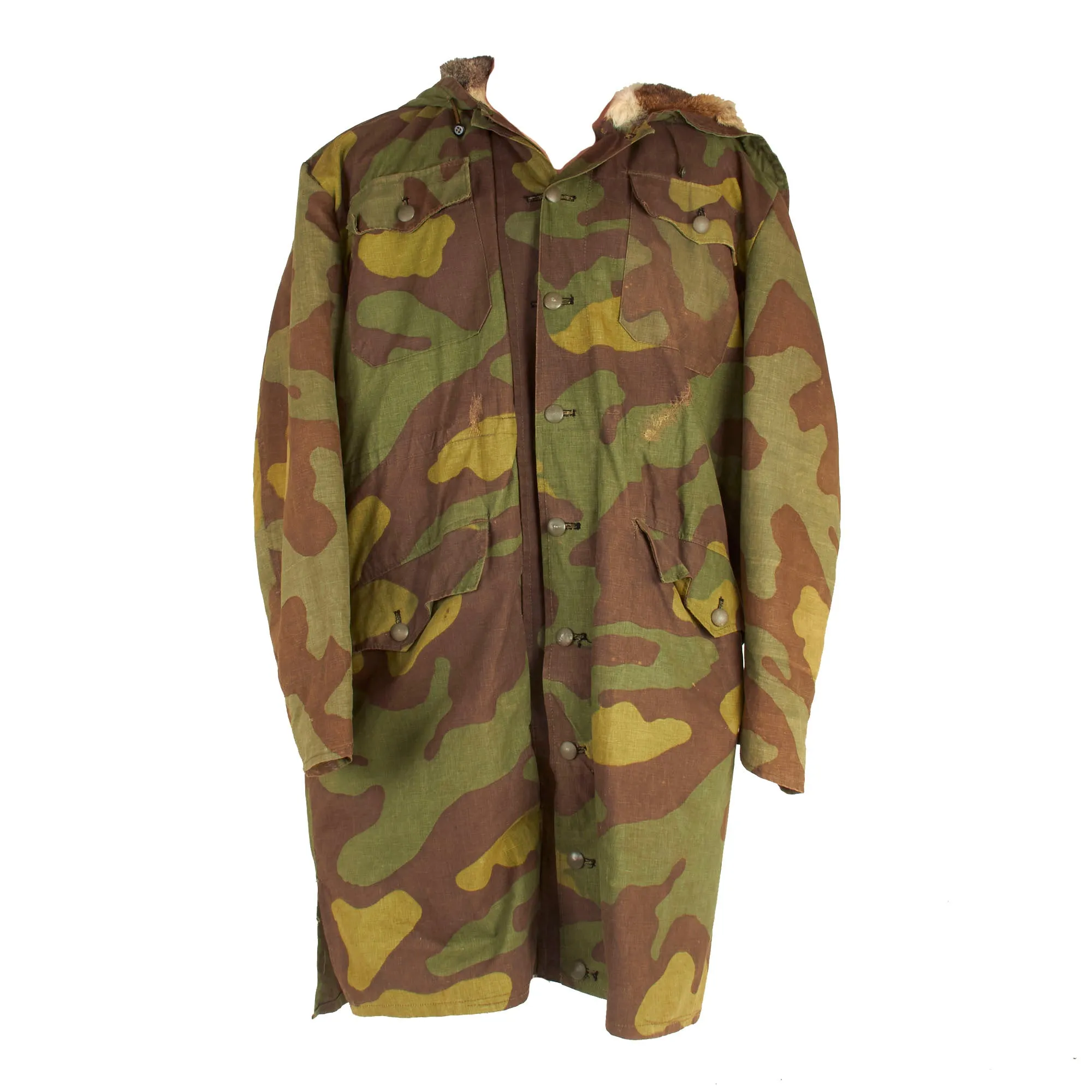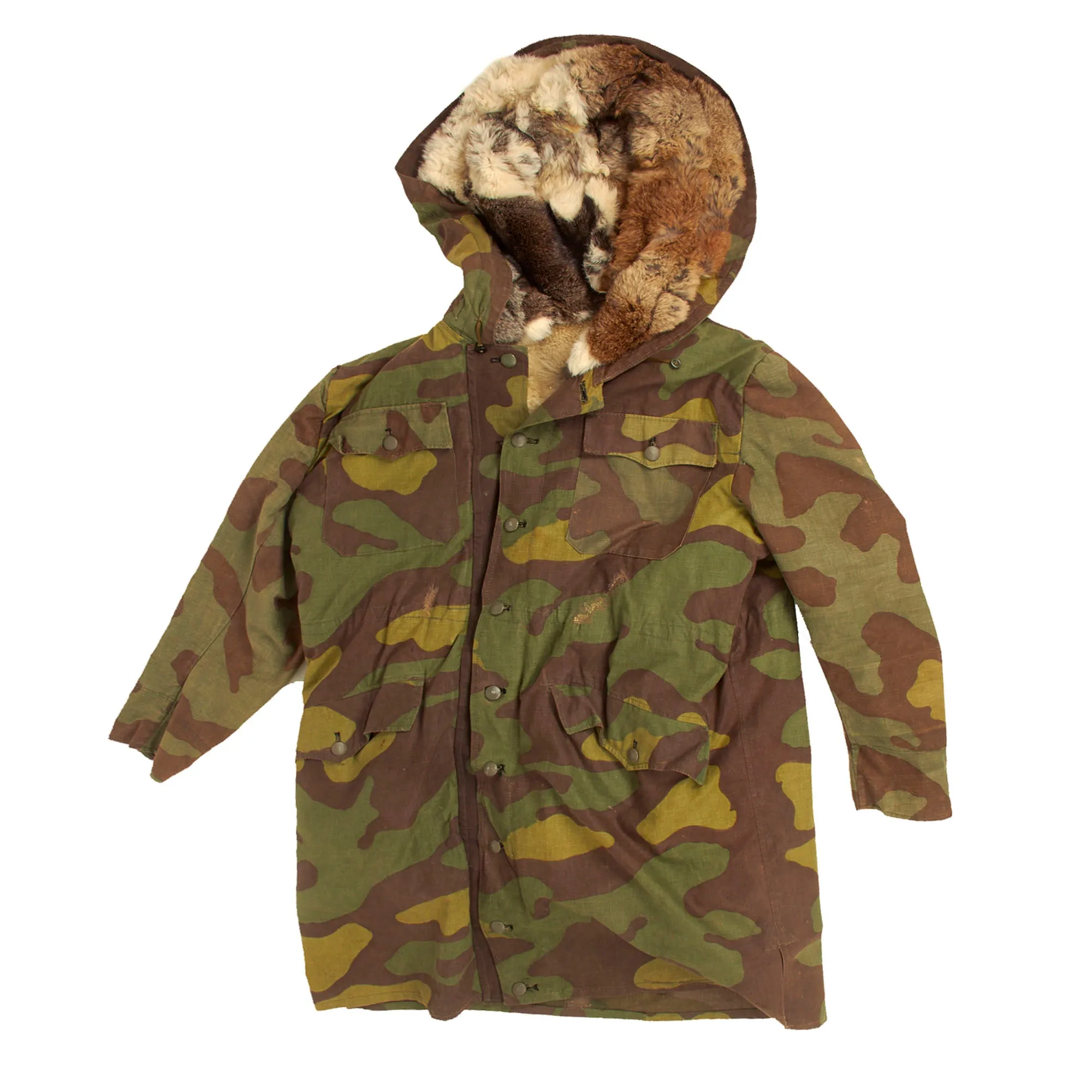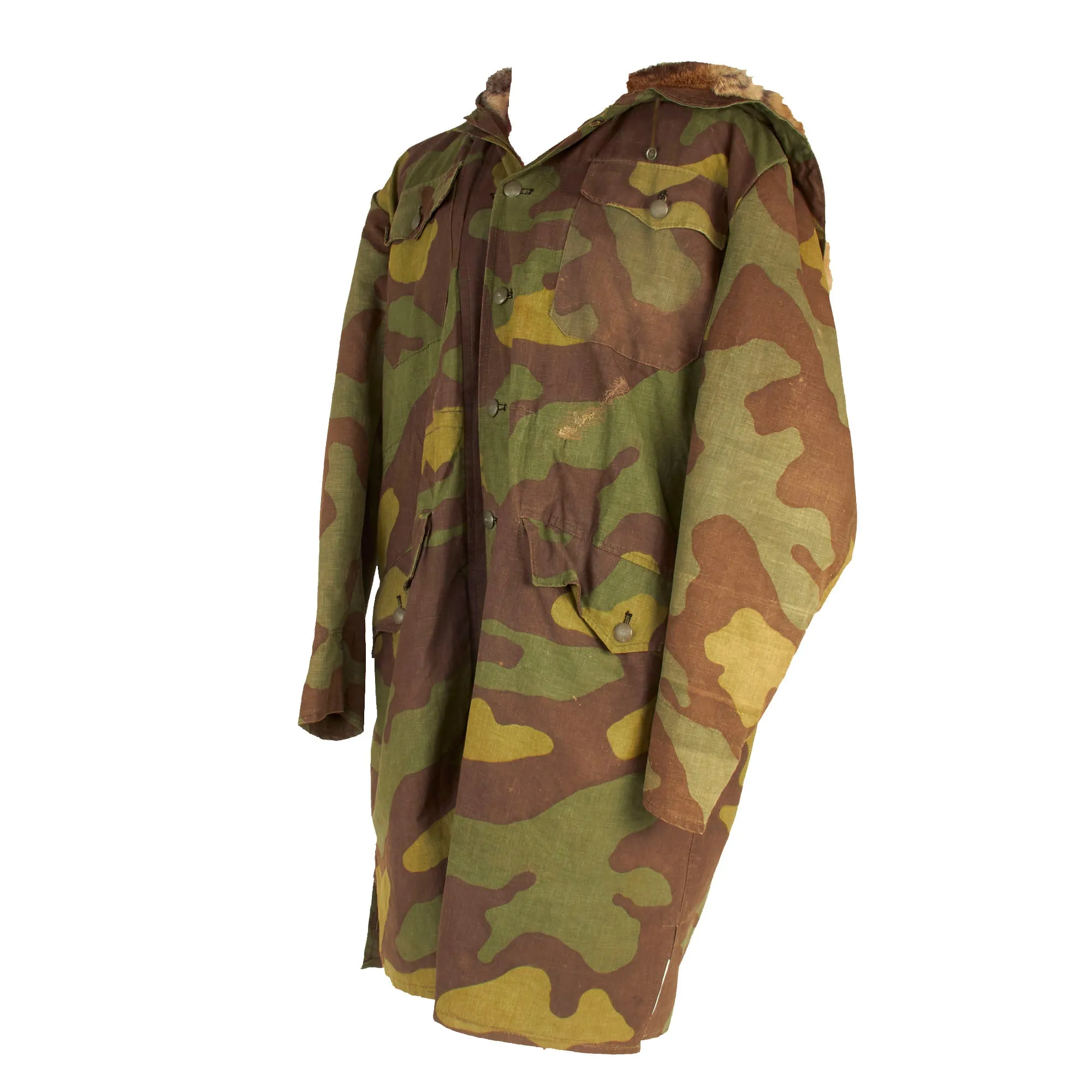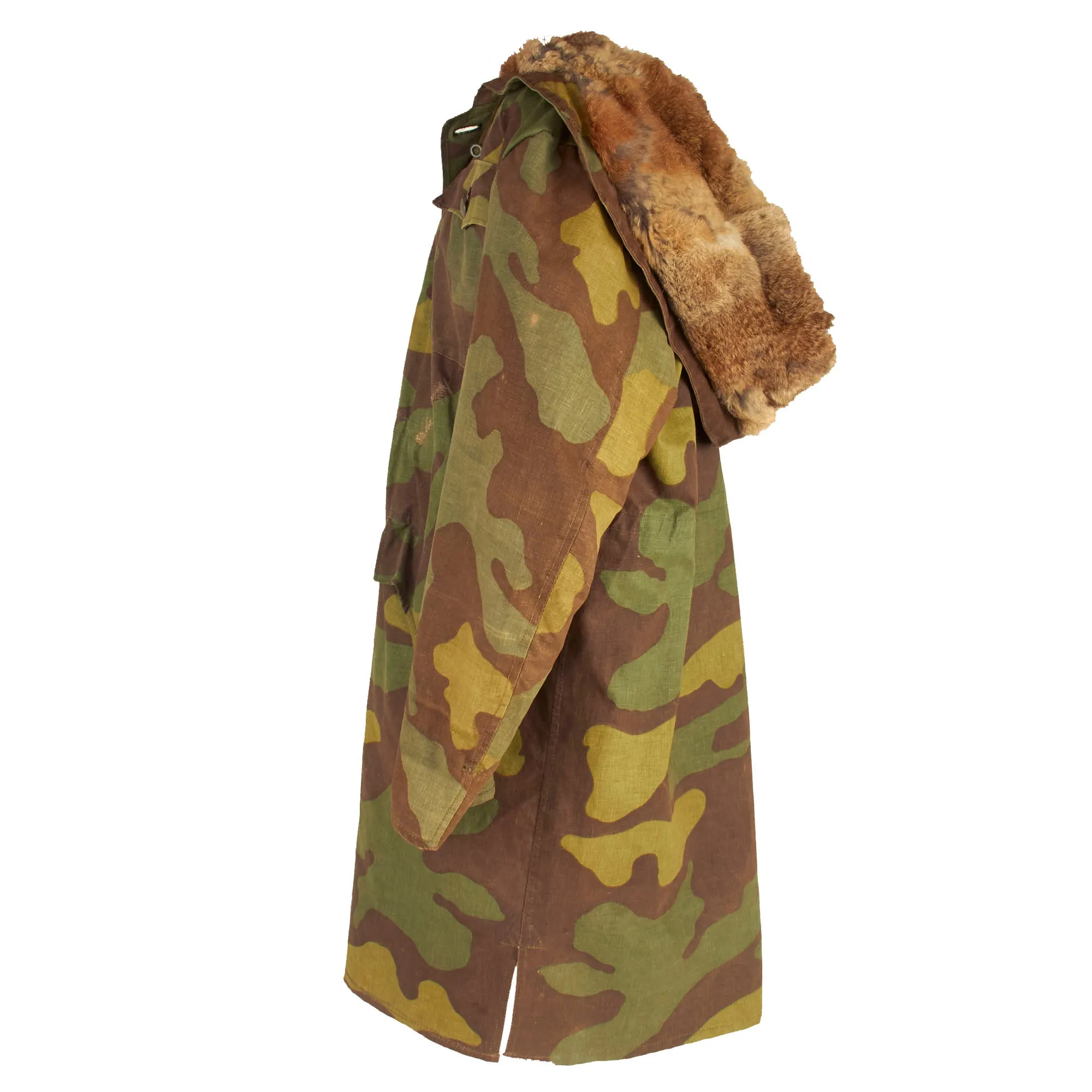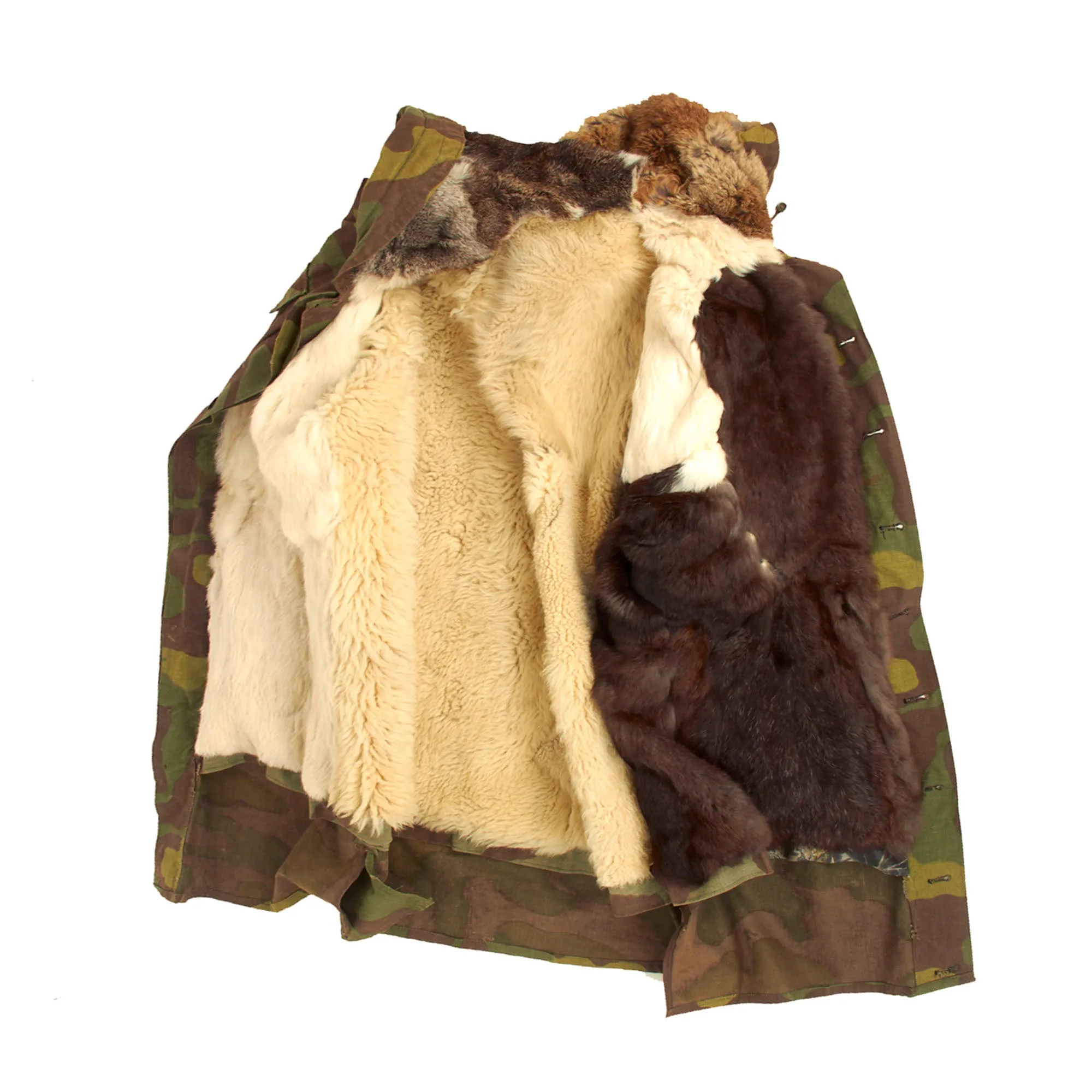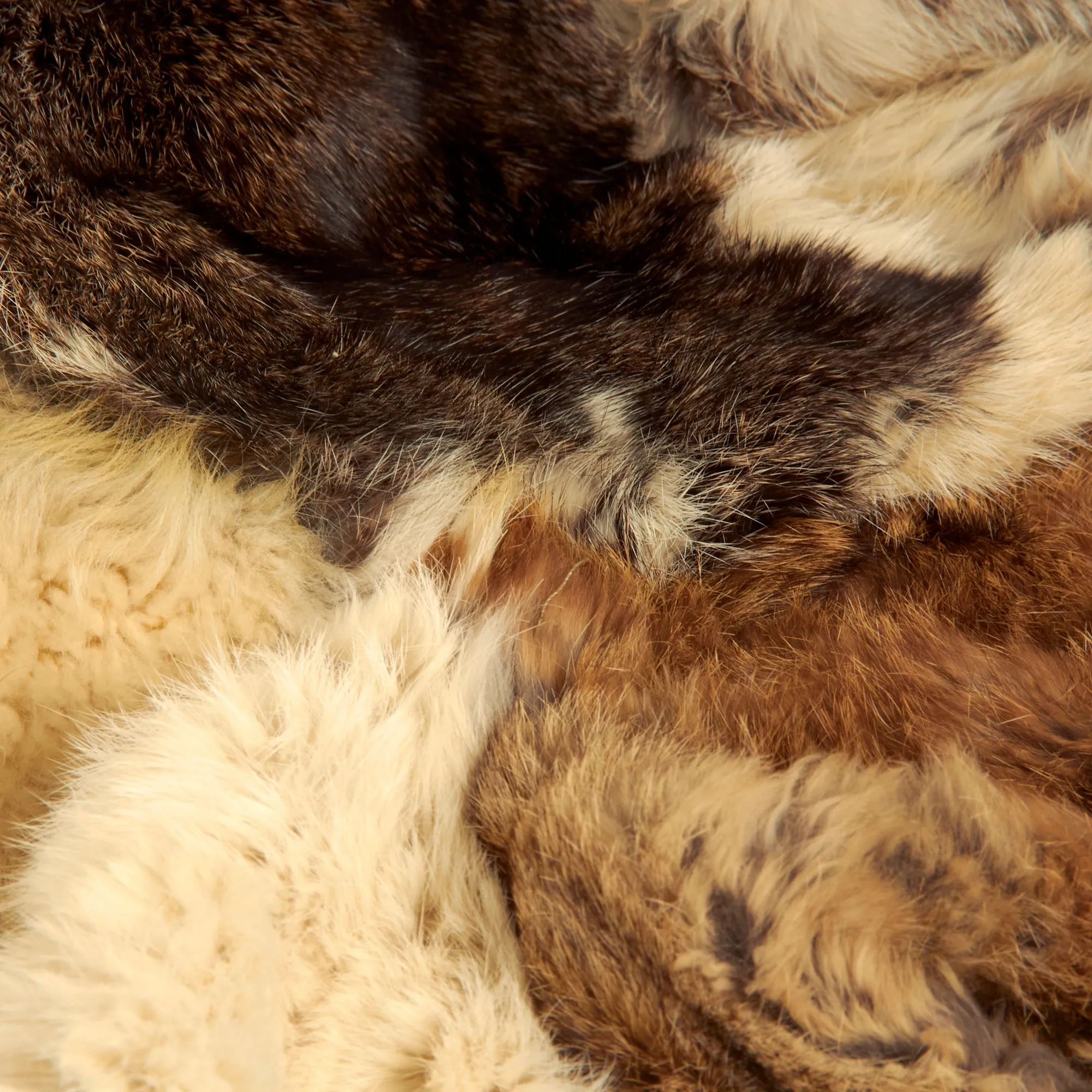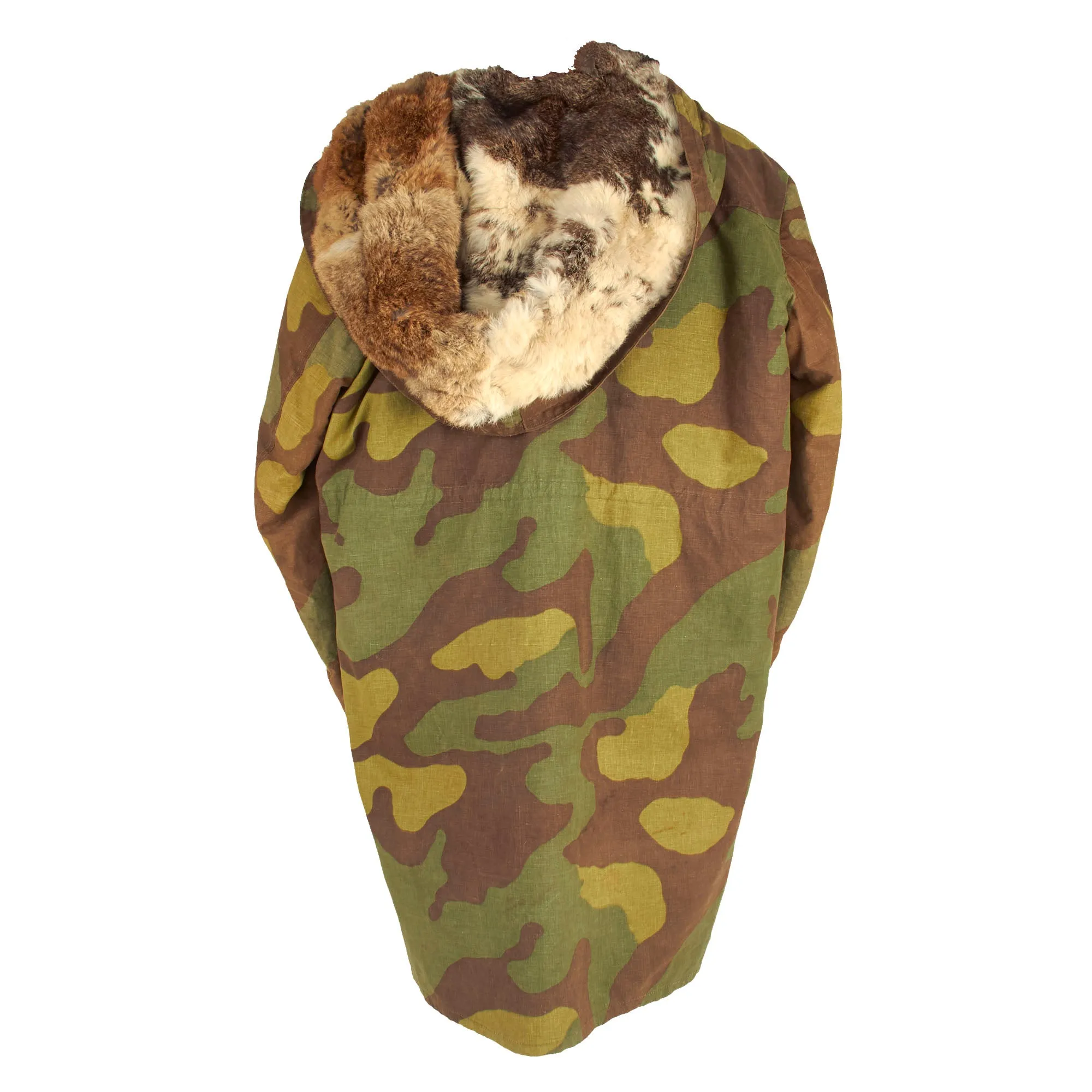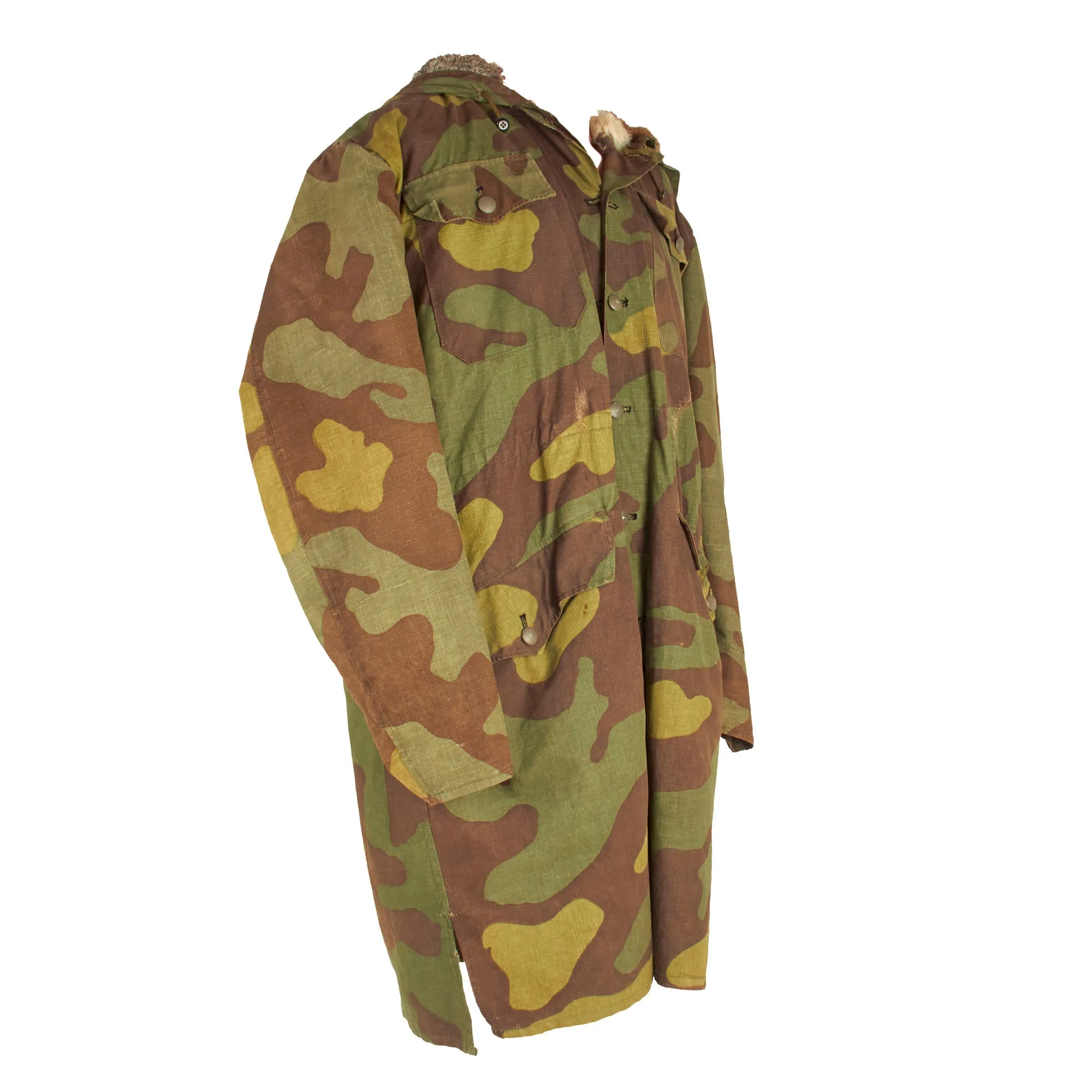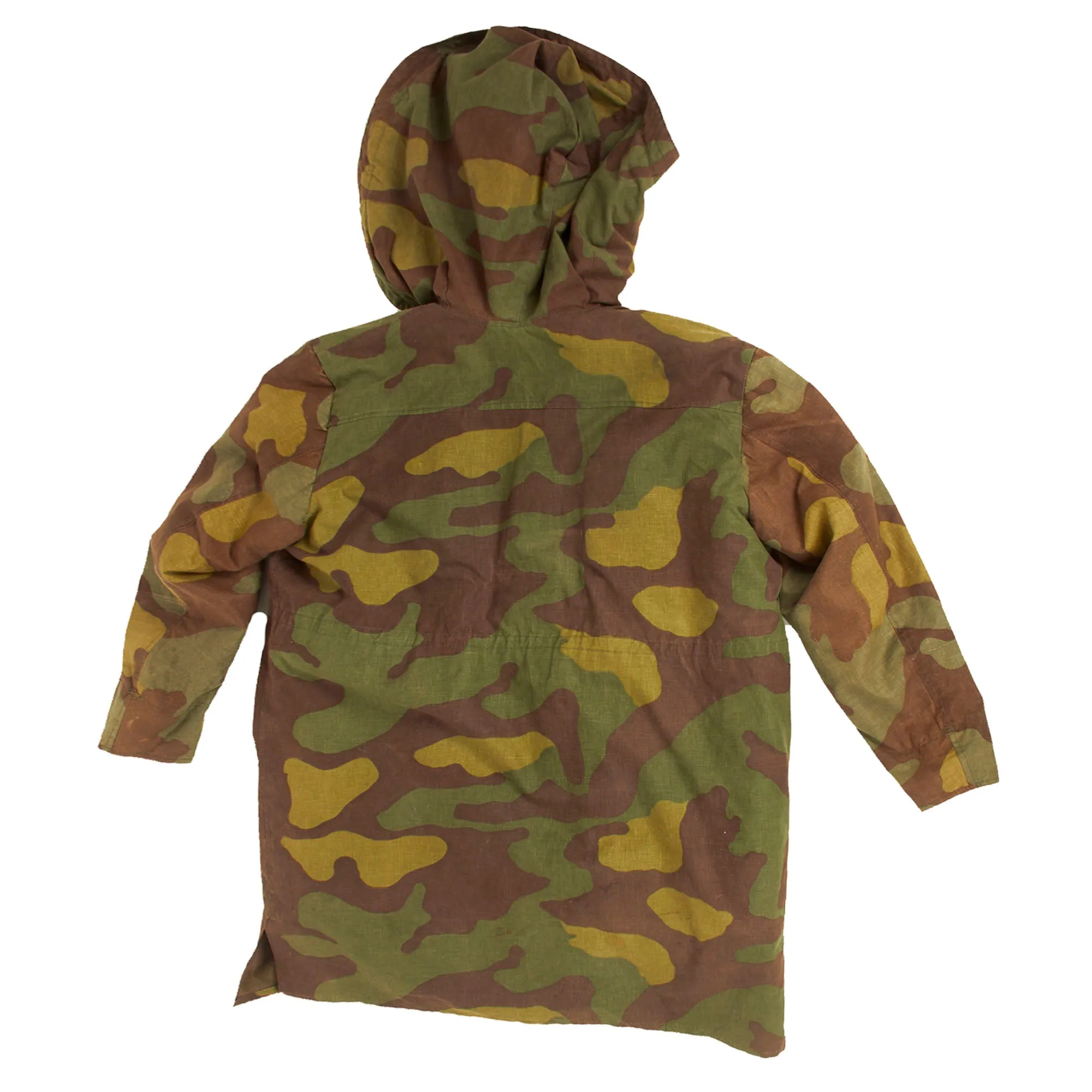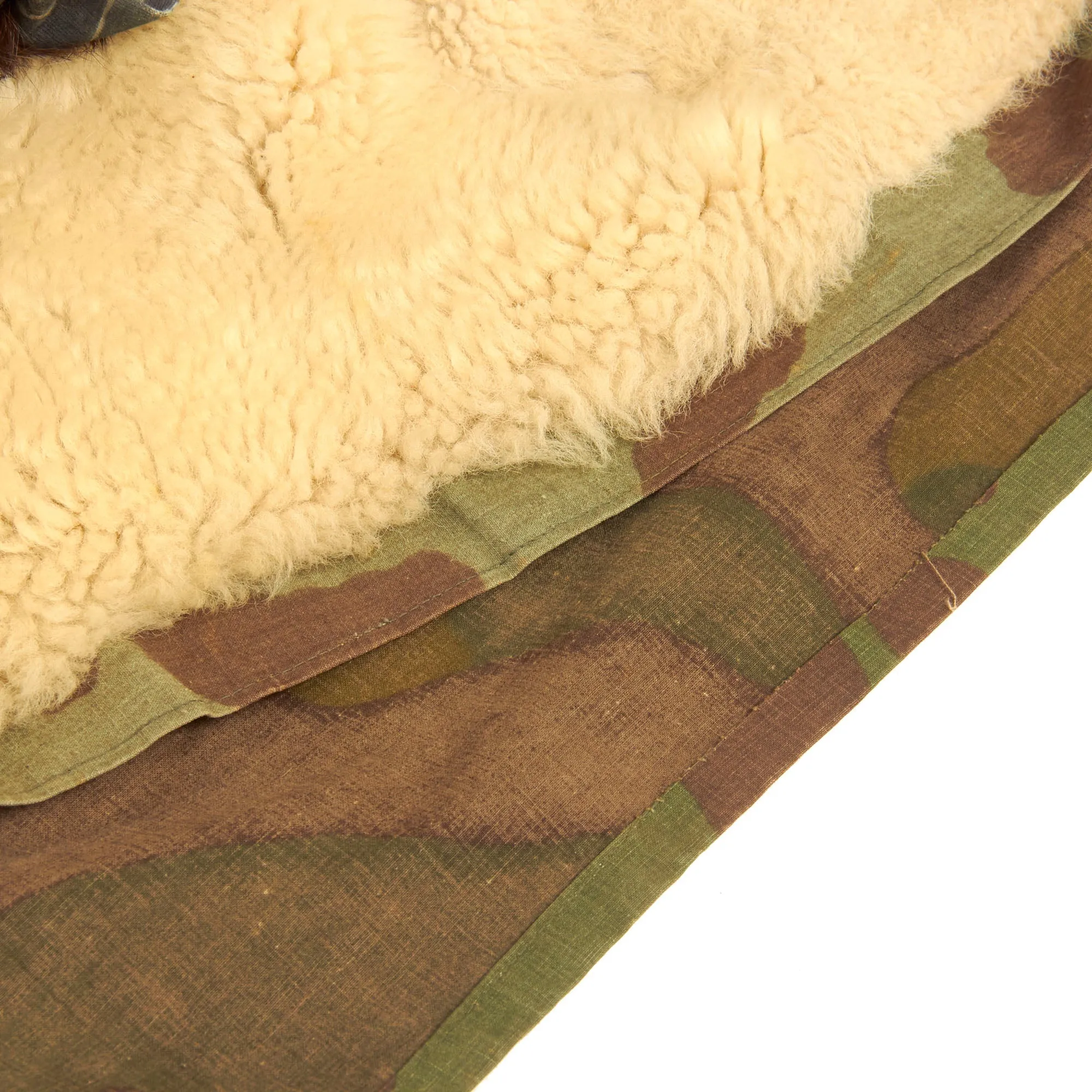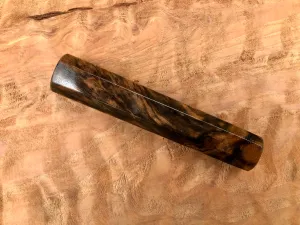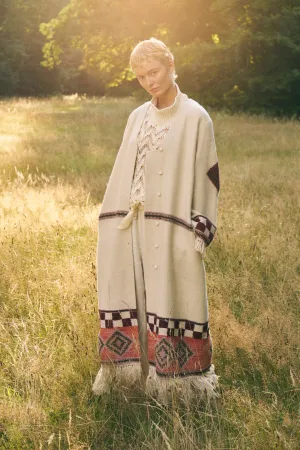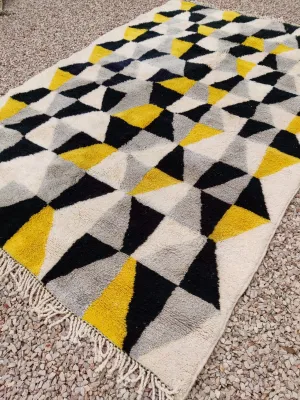Original Item: Only One Available. The severe cold encountered on the Russian front in the winter of 1941-42 found the Germans completely unprepared not only in heat retaining cold weather garments. This resulted in numerous, hastily improvised and makeshift heat retaining and snow camouflage items being utilized including everything from civilian winter clothing to white bed sheets. After the winter of 1941/42 the Oberkommando des Wehrmacht, (High Command of the Armed Forces), recognized the need for heavier winter clothing and testing began in the spring of 1942 to develop suitable garments.
The M43 fur-lined winter parka was designed in mid 1943 and featured with a full length button up front closure, it was introduced in early 1944. This Italian camouflage M43 parka was made from spare fabric that the Germans liberated from Italian Army camps. These parkas became known as the "Kharkov Parka", as they were used by Waffen SS units such as the 1st SSLAH, fighting in the Cold winter of the Russian front at one of the several battles that took place at Kharkov.
M43 fur-lined parka featured with all the construction details include:
- Shell of the parka is made of Italian Camouflage cotton poplin with 9 x Germany army standard pebble grain hollow backed button front closure with an overlapping wind flap and an integral hood. The buttons are mostly maker marked A & S with a date of 42.
- Two breast pockets and two diagonally angled slash hip pockets all with scalloped button down flaps. Buttons are maker marked as on the main closure.
- The interior of the jacket is fully lined in multi-panel rabbit fur to the body, which is mostly brown with some white fur interspersed. The sleeves are lined with gray HBT rayon / cotton blend, which has insulation and elastic inner cuffs.
- Fully rabbit fur lined oversized hood to accommodate a helmet.
Overall condition is very good, with some period stitched repairs on the front, as well as some thread repairs around the button holes. These jackets were VERY popular with USGIs, and often were captured and put into service. We have seen these before with laundry numbers inside, but we were not able to find any markings on this example.
A fantastic 100% original M43 winter parka issued to SS troops fighting on the Eastern Front!
Measurements:
Collar to shoulder: 11"
Shoulder to sleeve: 26.5”
Shoulder to shoulder: 22”
Chest width: 27"
Waist width: 26"
Hip width: 26”
Front length: 38"
Third Battle of Kharkov
The Third Battle of Kharkov was a series of battles on the Eastern Front of World War II, undertaken by Army Group South of NSDAP Germany against the Soviet Red Army, around the city of Kharkov (today Kharkiv) between 19 February and 15 March 1943. Known to the German side as the Donets Campaign, and in the Soviet Union as the Donbas and Kharkov operations, the German counterstrike led to the recapture of the cities of Kharkov and Belgorod.
As the German 6th Army was encircled in the Battle of Stalingrad, the Red Army undertook a series of wider attacks against the rest of Army Group South. These culminated on 2 January 1943 when the Red Army launched Operation Star and Operation Gallop, which between January and early February broke German defenses and led to the Soviet recapture of Kharkov, Belgorod, Kursk, as well as Voroshilovgrad and Izium. The Soviet victories caused participating Soviet units to over-extend themselves. Freed on 2 February by the surrender of the German 6th Army, the Red Army's Central Front turned its attention west and on 25 February expanded its offensive against both Army Group South and Army Group Center. Months of continuous operations had taken a heavy toll on the Soviet forces and some divisions were reduced to 1,000–2,000 combat effective soldiers. On 19 February, Field Marshal Erich von Manstein launched his Kharkov counterstrike, using the fresh II SS Panzer Corps and two panzer armies. Manstein benefited greatly from the massive air support of Field Marshal Wolfram von Richthofen's Luftflotte 4, whose 1,214 aircraft flew over 1,000 sorties per day from 20 February to 15 March to support the German Army, a level of airpower equal to that during the Case Blue strategic offensive a year earlier.
The Wehrmacht flanked, encircled, and defeated the Red Army's armored spearheads south of Kharkov. This enabled Manstein to renew his offensive against the city of Kharkov proper on 7 March. Despite orders to encircle Kharkov from the north, the SS Panzer Corps instead decided to directly engage Kharkov on 11 March. This led to four days of house-to-house fighting before Kharkov was recaptured by the SS Division Leibstandarte on 15 March. The German forces recaptured Belgorod two days later, creating the salient which in July 1943 would lead to the Battle of Kursk. The German offensive cost the Red Army an estimated 90,000 casualties. The house-to-house fighting in Kharkov was also particularly bloody for the German SS Panzer Corps, which had suffered approximately 4,300 men killed and wounded by the time operations ended in mid-March.




